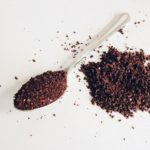You know it well: that fragrant cup of coffee, served just how you like it: the temperature’s right, the strength is ideal, it’s in your favorite drinking vessel and you’re just enjoying watching the world go by.
You even know, from the sheer, well, ferocity of the flavor, that it’s a robusta blend that you’re savoring. Ah, but just a second there – which robusta blend? Could it possibly be a coffee that involves coffea canephora, sometimes known as C Canephora Robusta?
Where Did C Canephora Robusta Originate From?
Many serious coffee drinkers are aware that there are two main types of coffee plant, the robusta, and the Arabica varieties, with thousands of individual plants within those categories. We also know that the majority of the milder coffee blends we encounter originate as beans from the Arabica plants, while the sturdier flavors are often from the robusta shrubs. Including canephora robusta.
How often, though, do we really pay attention to the actual name of the coffee plant? Did you know that coffea canephora is the most commonly cultivated coffee bean in the world, along with coffea Arabica? Did you know that coffea canephora robusta has about the highest natural caffeine content you can find?
It’s thought, based on history and a bit of legend, that coffee almost certainly originated in the locations of Madagascar and Africa, although Ethiopia lays claim to early cultivation. We also know that the plant was grown and harvested as a crop in what is now the Republic of Yemen, an area which has a very similar climate to the Ethiopian Highlands. Coffea robusta, however, owes its origins to the land of Zaire, where it was first found growing in the wild.
Technically, coffee trees are shrubs, and evergreen ones at that. Robusta trees generally grow to an impressive height of around 10 to 12 meters and are pruned quite dramatically to a height of 2 to 3 meters.
The white coffee flowers are especially fragrant, and appear several times a year, usually at the end of the dry season. They are pollinated by various insects and the wind. Some scientists even think that the scent may help insects remember, and return to, the flowers.
Once pollinated, the flowers fade very quickly. The flowers of the robusta trees become small berry-sized fruits after about 2 to 3 months, growing together in clusters. In the first instance, the color of the fruit is green, but this green coffee quickly turns yellow and then dark red. The final color of the coffee fruit is one of the reasons they’re sometimes referred to as cherries.
How Did We Find Out About C. Canephora Robusta?
Robusta cherries need around 8 to 12 months to ripen. This, combined with the process of roasting, helps them to develop that typically rich, rounded, gloriously dark flavor.
While Arabica coffee trees prefer cool, frost-free climates (think mountains), robusta varieties, including coffea canephora, are happier at lower altitudes. These trees like a warmer, more humid climate. Indonesia, West Africa, and Vietnam all produce particularly good robusta coffee varieties.
Canephora Robusta made a pretty dramatic entrance on a 2012 edition of the Dr. Oz television show, where various claims were made about the power of coffea canephora supplements to help with weight loss. As with so many “magic supplements”, however, the truth about whether C Canephora Robusta is an effective dietary aid is a little more complex.
Obesity levels in many parts of the world are at an all-time high so anything that can help maintain an appropriate weight has to be worth considering, as long as it isn’t adversely impacting our health.
Some studies suggest that one of the active compounds in green coffee beans, chlorogenic acid, may help to reduce the absorption of carbohydrates and possibly fats. Blood sugar and insulin spikes are also thought to be reduced for some individuals.
Weight Loss Benefits of C Canephora Robusta
One of the products made from canephora robusta beans, namely green coffee bean extract, has been shown in some medical trials to be beneficial for weight loss. Although some of the trials are very small, what is known is that green coffee beans are packed with antioxidants.
Some medical evidence does indicate that Canephora Robusta, or GCE, or green coffee extract if you prefer, can be an effective tool to help some individuals lose weight. The impact on weight loss of coffea canephora has, however, been shown to be relatively short-lived for some.
Of course, wanting to lose weight isn’t the only reason you might decide to up your intake of coffee canephora, or use a little green bean coffee extract in your diet. There is abundant documented evidence, even if it is occasionally contradictory, that coffee can be beneficial for some health conditions, including type 2 diabetes and Alzheimer’s.

Scientists and many clinicians do know that coffee is loaded with antioxidants and that two of the most important active compounds are Chlorogenic Acid and caffeine. When coffee beans are roasted, however, much of the chlorogenic acid is removed. Green coffee beans, on the other hand, retain their levels of chlorogenic acid – as they haven’t yet been roasted.
Despite the fact that canephora robusta green coffee beans have one of the highest levels of caffeine you’ll find in nature, green bean robusta coffee extract itself is low in caffeine.
What’s So Special About Canephora Robusta Anyway?
Well, you might know C Canephora Robusta better as green coffee extract, or green coffee bean extract, two of its somewhat more informal names. And when it comes to what makes canephora robusta special, it has several qualities. Coffea canephora accounts for around 30% of the world’s coffee production.
What is green coffee, anyway? Specifically, what is coffea robusta, and what makes its associated product, the one known as green coffee beans extract, so special? First of all, the plants themselves are high in caffeine. Secondly, canephora robusta generally has a higher crop yield than arabica.
Green coffee bean extract certainly appears to be effective when it comes to helping some people lose weight. You can buy this coffea canephora supplement under various brand names although you may find some have been discontinued.
As with any dietary supplement, if you do decide to use it for weight loss, or general health benefits, it’s a good idea to check with your health professional. This can help you make sure it’s appropriate for you and your personal circumstances. This is particularly advised with coffea canephora as some scientists have found evidence of reactions with certain medications, particularly where it concerns large amounts of the substance.
This coffee bean variety has the highest caffeine content of any members of this plant group. If you’ve got the right environment for this shrub, it also makes a surprisingly attractive house or outdoor plant and offers a great talking point – over a cup of coffee, obviously.
Despite the high caffeine content of c canephora robusta itself, however, when it’s processed into green coffee bean extract, it has a lower caffeine content than its roasted equivalent. What does remain high is the chlorogenic acid content. Research into the properties of chlorogenic acid indicates that it has several health benefits.
We’re not entirely sure we’d have enough space in our lounge or even our yard to grow canephora robusta in the quantities required for commercial production, though, so we’ll stick to tracking it down at the local health food store or coffee specialist.

Hi my name is Larry, a coffee aficionado from the US. I have already visited Colombia, Sumatra, Guatemala, Costa Rica, Ethiopia and Jamaica in my pursuit of finding the best-tasting coffee beans. I currently write from Bali and enjoy the relaxed life that you can only find in Canggu. Welcome to my coffee world!





